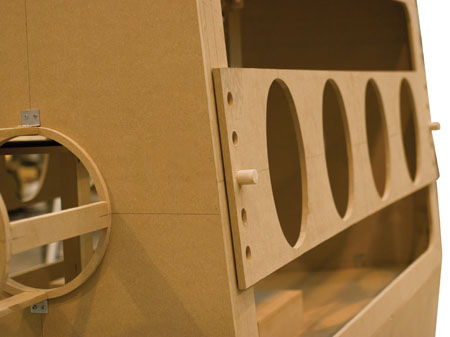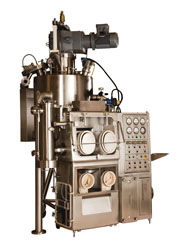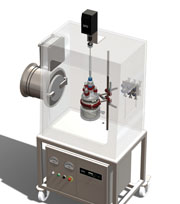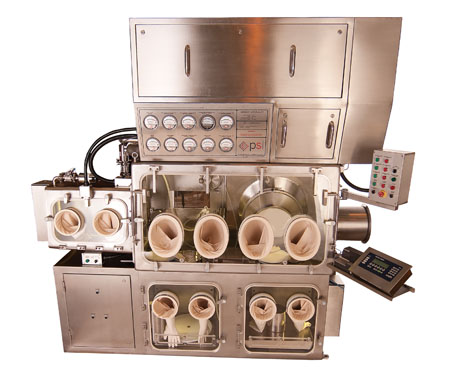Reliable and efficient high containment continues to be a challenge for the pharma industry. Maurice Pitcher, ceo of Powder Systems Ltd (PSL), a specialist in pharmaceutical containment, looks at the main hurdles and outlines some key considerations.
With current technology, operator exposure levels (OELs) of 10–50 nanograms/m³ 8hr TWA can be readily achieved and should not present an unreliable outcome. However, some of the key failure modes observed over many years include:
- Inability to achieve a pass on OEL measurement during validation
- Equipment is too difficult to work and operators take a shortcut
- Rapid system deterioration after production use
- Production rate and quality problems
- Dust explosion or solvent ignition
- Cleaning times and methods are unrealistic and sometimes unsafe
- Lack of budget where there is a need to manufacture high potency compounds without full recognition of the costs.
Let us consider the main influences providing more positive and controlled outcomes.
OEL definition and testing:
The number one priority is operator safety and drug quality. When developing drugs, the use of novel materials means that the risks are not fully understood at the early stages. I remember as a laboratory technician getting the ‘flu’ when working on a single cell protein; this turned out to be a universal allergic reaction and nobody had been aware of this at the early development stage.
Companies have to be ultra conservative until they have established sufficient data for the product. It is not untypical for a research level of nanogram/m³ to be relaxed to 1µg by the production stage.
A common method to establish OEL performance is to use a placebo, such as a micronised lactose with a d50 at approximately 20µm (see graph), which accredited laboratories can detect at 2ng. For more established products, it is clearly advisable to develop test methods and carry out checking with routine follow-ups for that specific product.
SMEPAC (standardised measurement of equipment particulate airborne concentration) is a useful guideline to follow when measuring OEL. It takes into account background prior to testing and potential weak points around the equipment in addition to passing traffic. It will also allow comparisons of performance.
There has been a trend in recent years to have bands of OEL for facility performance. When validating, we need to ensure that we test to the lower level. A regular method is to simulate three operations over one hour, for example, and utilise this result in a Total Weighted Average (TWA) consideration.
Utilising an additional 10:1 safety factor, for example 0.1µg/m³ rather than 1µg/m³, is questionable. There is already a considerable safety factor built into the initial OEL objective and this additional factor has been used due to unreliable system design. This is not a scientific approach, as it would suggest a lack of knowledge and understanding resulting in unnecessary cost and complication.
So where does the unreliability come from? When buying a reactor, dryer, granulator, mill system or filling machine, you expect it to work. A containment provider has truly to understand all relevant manufacturing processes to ensure practical and safe solutions. If you are not confident in the containment provider’s understanding, you will have problems.
Performance levels should also have guarantees otherwise there is no confidence in outcomes.
Safety failures
Examples of problems with process safety include an instance in the past where one engineer wished to charge a strong oxidising agent through the same glovebox system as organics to a vessel. One would hope this would eventually be recognised as an unscheduled reaction in the glovebox.
Furthermore, several dust explosions have been observed in dispensaries where the difference of a sealed enclosure as opposed to an open downflow booth has not been recognised.

Figure 1: A high containment filtration and drying isolator (FilterBox) mock-up
Your containment provider should be able to assess with you the following:
- First of all, designs that are workable by an operator. Run through all of the operations to be achieved using full-scale ergonomic models, where you are not familiar with a design (see Fig. 1). Incorporate oval gloveports for easier operation and do not exceed 550mm (front to back) for single sided rigid window access.
- They should consider modification of process equipment where necessary, i.e. removal of drives to the outside of an isolator (Fig. 2).
- The containment systems must have robust designs that are supported by long-term field operations data. These designs also need to consider construction standards for long-term performance. Will 2mm stainless steel bodies perform as well as 4mm in continuing to seal 10 years later? How do drums dock and take into account different sizes and weights? Is the reliance on a single thin barrier sufficient if there is a breach?
- Powder handling has to work routinely or be sensibly recovered in a contained fashion. Laboratory tests can be undertaken on internal friction cohesion, external friction and bulk density (the potential energy to overcome these frictions) in anticipating powder flow. A major installation can fail due to lack of powder handling assessment.
- Safety measures are a critical point when reviewing a containment solution to avoid dust explosion or solvent ignition. Most organic dust will not ignite below 8–9% oxygen. Aluminium alloys, for example, will ignite at 2–3% oxygen. Static ignition of solvents in most cases can be prevented below 4% oxygen; however, pyrophoric substances like lithium hydride should be at zero oxygen.
- An assessment of glove permeability should also be considered. When previously working in production with a substance that attacked the cholinesterase in the blood, the product was found to have permeated the initial glove selection. This was picked up by weekly blood sample checks on the operators and the glove material was then changed to prevent this occurrence.
- Sampling can be a difficult challenge if not considered at the start. If sampling raw materials it may be an opportunity to subdivide at the same time to avoid double handling of the raw material drums. Process sampling should assess multi product processes, as different batch levels would limit a fixed position sampler. An angled sampler can overcome these height differentials (Fig. 3).
- Cleaning regimes form an integral part of the successful design implementation. For vessels and dryers, reflux cleaning followed by Clean In Place (CIP) can be very effective, reducing levels down to 5ppm or non-detectable (Fig. 4). For large intermediate bulk containers (IBCs), ultra high pressure planetary nozzle cleaners are very effective (200 barg at the cleaning head).

Figure 4: A 0.6m² filter dryer with minimum gap design allowing reflux cleaning
For isolators, the use of wipes to pre-clean is advised as this provides a concentrated solid waste rather than high volumes of liquid waste that are more costly to treat. CIP should be completed following the wiping technique. Product contact surfaces of 0.4µm Ra are perfectly adequate without electro polishing, which is required for sterile applications. Spraying solvents inside non-pressure vessels, even with purging, is not recommended. - Finally, planning the equipment to its exact requirements is necessary, ensuring there is sufficient space and installation access to the building.

Figure 2: A GFD FilterBox 3D model showing the drive outside the acrylic isolator

Figure 3: Multi-purpose dispensing and sampling isolator with drum hoist system
If unfamiliar with the practice of high containment, it is worth making some benchmark visits to other manufacturers. It is a good investment to spend time with your supplier early in the planning stage and review the design alongside a draft User Requirement Statement (URS). This will help to avoid surprises further down the line and ultimately increase the success of your project.




